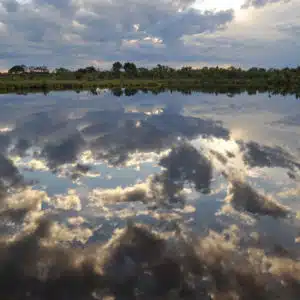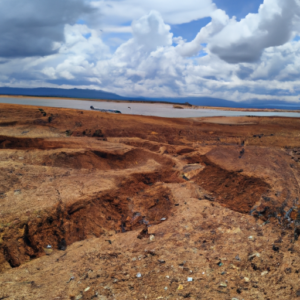Introduction to Madagascar’s Unique Biodiversity
Madagascar, often referred to as the eighth continent, is an island with diverse landscapes and exceptional biodiversity. Isolated from the African continent for approximately 88 million years, this island is home to unique fauna and flora. In 2024, exploring Madagascar’s biodiversity is a fascinating adventure for nature lovers, offering unparalleled richness in terms of biological diversity.
Madagascar’s biodiversity is the result of millions of years of evolution in isolation, giving rise to species found nowhere else on the planet. This article invites you to discover this unique biodiversity by exploring endemic species, varied ecosystems, the threats they face, and ongoing conservation efforts. Prepare to be amazed by the natural beauty of Madagascar in 2024.
The Geological History of Madagascar
The geological history of Madagascar is fascinating and has played a crucial role in shaping its biodiversity. Separated from Africa approximately 88 million years ago, and then from India approximately 84 million years ago, the island evolved in isolation, allowing its species to develop independently. This long geological isolation has turned Madagascar into a true laboratory of evolution.
Tectonic movements and climate variations have shaped the island’s landscapes, creating a mosaic of ecosystems ranging from humid tropical forests to arid savannas. This diversity of habitats has facilitated the emergence of numerous endemic species, making Madagascar’s biodiversity particularly rich and unique. Understanding this geological history is essential to fully appreciate the island’s biological diversity.
The importance of biodiversity in Madagascar
The biodiversity of Madagascar is of crucial importance for several reasons. Firstly, it contributes to the stability of the island’s ecosystems, providing essential ecological services such as pollination, climate regulation, and water purification. The endemic species of Madagascar play a key role in these processes, and their preservation is therefore crucial for the health of the environment.
In addition, the biodiversity of Madagascar has significant economic and cultural value. Ecotourism, which attracts thousands of visitors each year, is an important source of income for local communities. The island’s unique medicinal plants and natural resources also offer opportunities for scientific research and the development of new products. Preserving this biodiversity is therefore essential for Madagascar’s economic and cultural well-being.
The endemic species of Madagascar
Lemurs: symbols of Madagascar
Lemurs are undoubtedly the most iconic creatures of Madagascar. These primates, which can’t be found anywhere else in the world, are a symbol of the uniqueness of Madagascar’s biodiversity. There are more than 100 species of lemurs, ranging from the tiny Madame Berthe’s Mouse Lemur, the smallest primate in the world, to the Indri, the largest of the lemurs. Each of these species has evolved to adapt to specific ecological niches, demonstrating incredible diversity.
Lemurs play a vital role in the ecosystems of Madagascar. They are essential pollinators and seed dispersers, contributing to the regeneration of forests. Unfortunately, many lemur species are threatened with extinction due to deforestation and hunting. The conservation of these primates is therefore a priority to preserve the island’s unique biodiversity.
Chameleons: diversity and adaptation
Madagascar is also famous for its great diversity of chameleons. Approximately half of the world’s chameleon species are found here, many of which are endemic. These fascinating reptiles are known for their ability to change color, an adaptation that allows them to camouflage, communicate, and regulate their body temperature. Among the most remarkable species is the panther chameleon, famous for its bright and varied colors.
Madagascar’s chameleons have evolved to adapt to a variety of habitats, from humid tropical forests to arid areas. Their diversity and unique behaviors make them fascinating subjects of study for scientists and must-see attractions for tourists. The preservation of these species is essential to maintain the balance of the island’s ecosystems and to continue to amaze visitors with Madagascar’s biodiversity.
Madagascar’s diverse ecosystems
Tropical forests and their fauna
The tropical forests of Madagascar are among the richest and most diverse ecosystems on the island. These forests, which cover about 20% of the surface of Madagascar, are home to an incredible diversity of species, including numerous lemurs, chameleons, birds, and endemic plants. For example, Ranomafana forest is a biodiversity hotspot where rare species such as the golden bamboo lemur and the short-nosed chameleon can be observed.
These tropical forests play a crucial role in maintaining Madagascar’s biodiversity. They provide essential habitats for many species and contribute to climate regulation by absorbing carbon dioxide. However, these ecosystems are threatened by deforestation due to slash-and-burn agriculture and logging. Protecting these forests is therefore essential to preserve Madagascar’s biological wealth.
Coastal and marine areas
The coastal and marine areas of Madagascar are equally rich in biodiversity. Coral reefs, mangroves, and seagrass meadows are home to a multitude of marine species, including fish, turtles, dugongs, and corals. The islands of Nosy Be and Nosy Boraha are famous for their crystal-clear waters and abundant marine life, attracting divers and snorkelers from around the world.
Preserving these marine ecosystems is essential to maintain Madagascar’s biodiversity and to support local communities that rely on fishing and tourism. Coral reefs, in particular, are threatened by climate change, pollution, and overfishing. Conservation initiatives, such as the creation of protected marine reserves, are underway to protect these fragile habitats and their incredible biodiversity.
Threats to Madagascar’s biodiversity
Deforestation and Habitat Loss
Deforestation is one of the main threats to Madagascar’s biodiversity. Every year, thousands of hectares of forests are destroyed to make way for agriculture, logging, and urbanization. This loss of habitat has devastating consequences for endemic species, leaving them without shelter and food resources. Lemurs, in particular, are heavily impacted by deforestation.
Habitat loss also results in ecosystem fragmentation, making populations of certain species more vulnerable to diseases, predation, and inbreeding. Preserving Madagascar’s forests is therefore essential to protect its unique biodiversity. Reforestation and sustainable land management efforts are necessary to reverse this destructive trend.
Climate Change and its Impacts
Climate change poses another major threat to Madagascar’s biodiversity. Temperature and precipitation fluctuations affect the island’s ecosystems, disrupting species’ life cycles and altering natural habitats. For example, coral reefs suffer from bleaching, a phenomenon caused by increased water temperatures, which can result in coral death and the loss of marine biodiversity.
Terrestrial species are also not spared. Climate change can trigger droughts, floods, and forest fires, putting habitats and the species living in them at risk. The resilience of Madagascar’s biodiversity depends on our ability to mitigate the effects of climate change and implement adaptation strategies to protect vulnerable ecosystems.
Conservation Initiatives in Madagascar
Species Protection Programs
Several species protection programs are in place to preserve biodiversity in Madagascar. Local and international organizations are working together to protect natural habitats and restore populations of endangered species. For example, the lemur conservation project in Anjajavy aims to protect forest habitats and raise awareness among local communities about the importance of conservation.
Captive breeding and reintroduction initiatives are also being implemented for certain critically endangered species. These programs play a crucial role in safeguarding endemic species and preserving the genetic diversity of the island. Collaboration between scientists, governments, and local communities is essential for the success of these conservation programs.
Local and International Actions
Conservation efforts in Madagascar extend beyond species protection programs. Local and international actions are being taken to promote sustainable management of natural resources and raise public awareness about the importance of biodiversity in Madagascar. Initiatives such as eco-tourism, reforestation, and environmental education play a key role in preserving the island’s ecosystems.
International organizations such as WWF and Conservation International collaborate with local partners to implement large-scale conservation projects. These efforts include the creation of protected nature reserves, the promotion of sustainable agricultural practices, and the fight against illegal wildlife trade. International cooperation is essential to address the complex challenges of conservation in Madagascar.
How to explore the biodiversity of Madagascar in 2024
Best times to visit
For those who wish to explore Madagascar’s biodiversity in 2024, it is important to choose the right time to visit. The dry season, from May to October, is generally considered the best time to explore national parks and nature reserves. The weather conditions are ideal for hiking and wildlife observation, with pleasant temperatures and minimal precipitation.
The rainy season, from November to April, also offers unique opportunities, especially for observing certain species during their breeding period. However, the roads can be difficult to access due to heavy rains, and some parks may be closed. Planning your trip based on your specific interests and weather conditions is essential to fully enjoy your exploration of Madagascar’s biodiversity.
Must-visit sites
Madagascar is full of must-visit sites for nature and biodiversity enthusiasts. Ranomafana National Park, with its lush tropical forests and numerous lemur species, is a must-see for any visitor. Isalo National Park, with its spectacular canyons and rock formations, also offers unique opportunities for hiking and wildlife observation.
Coastal areas like Nosy Be and Nosy Boraha are ideal for exploring marine biodiversity. Coral reefs, mangroves, and white sandy beaches offer unforgettable experiences for divers and snorkelers. For a total immersion in Madagascar’s biodiversity, consider visiting several parks and reserves throughout the island, each with their own unique landscapes and species.
Conclusion
Exploring Madagascar’s biodiversity in 2024 is an unforgettable adventure that will connect you with one of the most unique natural treasures on our planet. From its iconic lemurs to its fascinating chameleons and diverse ecosystems, Madagascar is a true biodiversity treasure. However, this wealth is threatened by factors such as deforestation and climate change, making conservation efforts more important than ever.
For those wishing to discover this exceptional biodiversity, Madagascar Trip’s & Pic’s offers tailor-made experiences tailored to all types of travelers. Whether you’re a nature enthusiast, an adventurer, a cultural explorer, or a photographer, our customized tours, wildlife and flora explorations, cultural immersions, and adventure activities will meet your expectations. Join us for an unforgettable experience and contribute to the preservation of Madagascar’s unique biodiversity.
FAQ
What are the emblematic species of Madagascar?
The emblematic species of Madagascar include lemurs, chameleons, fossas, and numerous species of endemic birds and plants. Lemurs, in particular, are a symbol of Madagascar’s biodiversity and attract visitors from around the world.
Why does Madagascar have such unique biodiversity?
Madagascar has unique biodiversity due to its geographic isolation for approximately 88 million years. This separation has allowed the island’s species to evolve independently, giving rise to a multitude of endemic species found nowhere else in the world.
What are the main threats to Madagascar’s biodiversity?
The main threats to Madagascar’s biodiversity are deforestation, habitat loss, climate change, pollution, and illegal trade of wildlife and plants. These factors endanger many endemic species and disrupt the island’s ecosystems.
What efforts are being made to protect biodiversity in Madagascar?
Conservation efforts are underway in Madagascar, including species protection programs, reforestation initiatives, the establishment of protected nature reserves, and local and international actions to promote sustainable natural resource management. Collaboration between scientists, governments, and local communities is essential for the success of these efforts.
How can I contribute to the conservation of Madagascar’s biodiversity?
You can contribute to the conservation of Madagascar’s biodiversity
by supporting conservation organizations, participating in volunteer programs, choosing eco-friendly travel options, and raising awareness among your circle about the importance of biodiversity conservation. Traveling with Madagascar Trip’s & Pic’s, which offers environmentally-friendly tours, is an excellent way to support these efforts while discovering the natural beauty of Madagascar.








